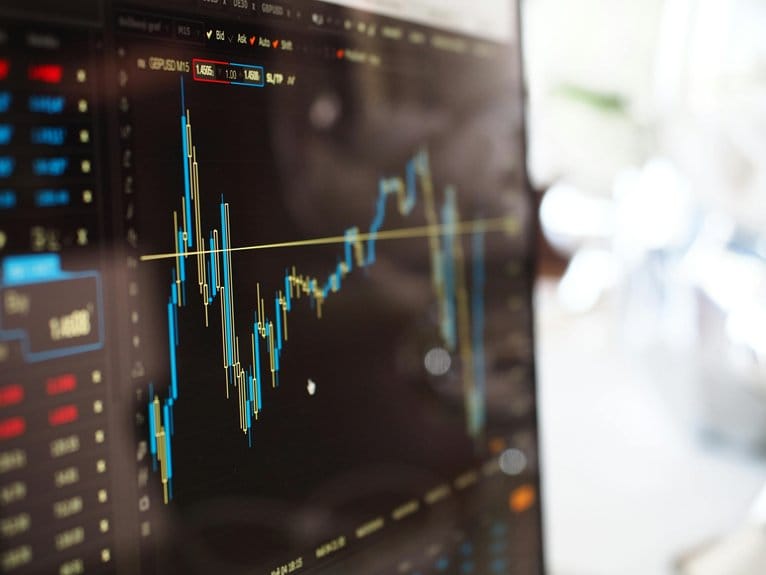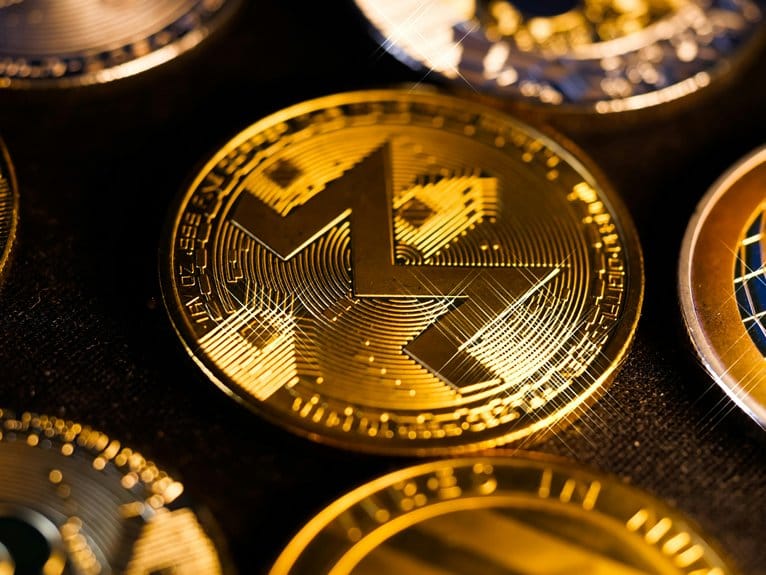Tokenized securities are revolutionizing financial systems by leveraging blockchain technology to transform traditional assets into digital tokens. This integration enables enhanced liquidity, reduced costs, and automated compliance through smart contracts. The technology allows for fractional ownership, 24/7 trading capabilities, and near-instantaneous settlement of transactions. Market participants benefit from improved transparency through immutable ledger records, while automated processes minimize human error and intermediary involvement. Despite regulatory challenges, real-world implementations demonstrate successful applications across real estate, private equity, and art markets. The evolution of this technology continues to unlock new possibilities in global financial markets.
Understanding Tokenized Securities
In the evolving landscape of digital finance, tokenized securities represent the convergence of traditional financial instruments with blockchain technology. Through the tokenization process, real-world assets are converted into digital tokens that exist on a blockchain, enabling secure and efficient ownership transfer while maintaining regulatory compliance.
Security tokens serve as digital representations of traditional assets, including stocks, bonds, real estate, and commodities.
Asset digitization fundamentally transforms how investments are structured and traded, offering enhanced liquidity through 24/7 market accessibility and reduced intermediary involvement. This transformation facilitates investment diversification by lowering minimum investment thresholds through fractional ownership opportunities, allowing investors to access previously inaccessible asset classes.
The technology enables automated compliance, transparent transaction recording, and streamlined settlement processes.
These innovations particularly benefit traditionally illiquid assets by creating new marketplaces where ownership rights can be traded efficiently.
The implementation of smart contracts in tokenized securities automates various aspects of securities management, including dividend distributions and voting rights, while maintaining the legal and regulatory frameworks necessary for traditional securities operations.
This technological advancement represents a significant step toward democratizing investment opportunities and modernizing financial infrastructure.
The Power of Blockchain Integration
Blockchain technology serves as the foundational infrastructure that powers tokenized securities, offering unprecedented levels of security, transparency, and operational efficiency. Through blockchain transparency, every transaction and ownership transfer is permanently recorded on an immutable ledger, establishing decentralized trust among market participants without traditional intermediaries.
The integration of smart contracts automates complex financial processes, reducing operational costs and eliminating human error in securities management. This automation, coupled with transaction efficiency, enables near-instantaneous settlement of trades and seamless compliance monitoring.
Asset fractionalization becomes possible through blockchain's inherent ability to divide securities into smaller, more accessible units, dramatically enhancing financial accessibility for a broader investor base.
Blockchain's digital identity capabilities ensure robust KYC/AML compliance while protecting investor privacy. This technological framework promotes investor empowerment by providing real-time access to asset information, voting rights, and dividend distributions.
The decentralized nature of blockchain eliminates single points of failure, enhancing system resilience and reducing counterparty risks. As financial markets evolve, blockchain integration continues to reshape traditional securities infrastructure, creating more inclusive, efficient, and transparent capital markets.
Benefits for Market Participants
The adoption of tokenized securities creates substantial advantages for various market participants across the financial ecosystem. Through liquidity enhancement, investors can trade assets more freely in secondary markets, while cost reduction is achieved through automated processes and reduced intermediary involvement.
These innovations enable broader investor access to previously restricted investment opportunities, democratizing financial markets.
Transparency improvement stands as a crucial benefit, as blockchain technology provides immutable transaction records and real-time asset tracking.
Fractional ownership allows investors to purchase partial shares of high-value assets, significantly lowering entry barriers and enabling more effective risk diversification strategies.
The increased transaction speed of tokenized securities facilitates near-instantaneous settlement, eliminating traditional T+2 or T+3 clearing periods.
Market efficiency is substantially improved through the automation of compliance, reduced administrative overhead, and streamlined trading processes.
These efficiencies translate into lower transaction costs, reduced counterparty risks, and more dynamic price discovery mechanisms.
The programmable nature of tokenized securities also enables automated dividend distributions and corporate actions, further enhancing operational efficiency for issuers and investors alike.
Regulatory Landscape and Compliance
Regulatory frameworks governing tokenized securities continue to evolve across global jurisdictions, presenting both opportunities and challenges for market participants. Financial authorities worldwide are developing comprehensive guidelines to address the unique characteristics of security tokens while ensuring market integrity and investor protection. These frameworks often emphasize compliance with existing securities laws while incorporating new provisions specific to blockchain-based assets.
Key compliance challenges include the implementation of Know Your Customer (KYC) protocols, anti-money laundering (AML) measures, and cross-border transaction monitoring. Market oversight mechanisms must adapt to the 24/7 nature of tokenized securities trading, requiring sophisticated surveillance systems and real-time reporting capabilities.
The legal implications of smart contracts and automated compliance protocols also demand careful consideration from both regulators and market participants.
Jurisdictions like Singapore, Switzerland, and the United States are establishing clear regulatory parameters for security tokens, though approaches vary significantly. These differences create additional complexity for global operations, requiring firms to maintain robust compliance programs that can adapt to multiple regulatory environments while maintaining operational efficiency and meeting investor protection standards.
Real-World Implementation Success Stories
Successful implementations of tokenized securities have demonstrated the practical viability of blockchain-based financial instruments across diverse market sectors. Notable examples include the tokenization of commercial real estate properties in Manhattan, where fractional ownership enabled broader investor participation and enhanced liquidity in traditionally illiquid assets.
Private equity firms have leveraged asset tokenization to streamline investment processes and reduce administrative overhead while maintaining regulatory compliance.
Venture capital has witnessed significant transformation through tokenized securities, with several prominent funds successfully deploying blockchain-based investment vehicles to manage investor contributions and distributions.
Crowdfunding platforms have integrated security tokens to facilitate real estate development projects, enabling smaller investors to participate in previously inaccessible opportunities.
In the art market, platforms have tokenized high-value artworks, creating fractional ownership opportunities and establishing new trading venues for fine art investments.
These implementations have consistently demonstrated key benefits: reduced transaction costs, increased market accessibility, improved liquidity, and enhanced transparency in asset ownership and transfer processes.
The success of these projects has established credible use cases for security tokens across multiple asset classes.
Market Challenges and Solutions
Despite growing adoption of tokenized securities, market participants face significant operational and technical challenges that require innovative solutions.
Market volatility remains a primary concern, as digital asset markets often experience rapid price fluctuations that can impact tokenized securities. Security risks, including smart contract vulnerabilities and cyber threats, necessitate robust technological safeguards and continuous system audits.
Liquidity concerns persist due to the emerging nature of these markets, with some tokens experiencing limited trading volumes. To address this, platforms are implementing automated market-making protocols and cross-platform interoperability solutions to enhance market accessibility.
Technology adoption faces resistance from traditional institutions, requiring streamlined integration processes and improved operational efficiency through standardized protocols.
Investor education represents another crucial challenge, as many market participants lack understanding of tokenized securities' mechanics and risks. Financial institutions are responding by developing comprehensive educational resources and implementing user-friendly interfaces.
Regulatory compliance frameworks are evolving to accommodate these new asset classes while maintaining market integrity and investor protection. These solutions, combined with advancing technology infrastructure, are gradually addressing the market's growing pains.
Future of Digital Asset Trading
The vast majority of financial industry analysts predict that digital asset trading will undergo transformative changes over the next decade, driven by technological innovations and evolving market demands.
As trading platforms continue to mature, the integration of sophisticated matching engines and enhanced digital asset liquidity mechanisms will reshape how investors interact with tokenized securities.
Key developments are expected in cross-border trading capabilities, with platforms implementing standardized protocols for seamless international transactions.
These advancements will likely reduce settlement times from days to minutes while simultaneously decreasing operational costs.
Market participants anticipate the emergence of hybrid trading systems that combine traditional finance infrastructure with blockchain technology.
The evolution of digital asset trading will also witness the introduction of more complex financial instruments, including derivatives and structured products based on tokenized securities.
Trading platforms are expected to incorporate advanced risk management tools and automated compliance systems to address regulatory requirements across multiple jurisdictions.
This technological progression, coupled with increasing institutional adoption, suggests a future where digital asset trading becomes the predominant method for securities transactions in global financial markets.
Frequently Asked Questions
Can Tokenized Securities Be Gifted or Transferred as Part of Inheritance?
Tokenized securities can be transferred through inheritance planning mechanisms, with digital asset transfer protocols enabling beneficiaries to receive assets according to established legal frameworks and smart contract functionalities.
What Happens to Tokenized Securities if the Issuing Platform Goes Bankrupt?
During platform bankruptcy, tokenized securities remain legally separate assets. Investors maintain ownership rights, with asset recovery procedures typically managed through custodial arrangements and regulatory frameworks governing security token operations.
How Do Tokenized Securities Affect Personal Tax Reporting Requirements?
Tokenized securities require detailed tax reporting of capital gains, dividends, and transfers. Investors must follow established reporting standards while adapting to evolving tax implications specific to digital asset transactions.
Are Tokenized Securities Covered by Traditional Investment Insurance Protection Programs?
Traditional investor protections and insurance programs face regulatory challenges with tokenized securities, as many jurisdictions are still developing frameworks to address these digital assets' unique characteristics and risks.
Can Tokenized Securities Be Used as Collateral for Traditional Bank Loans?
Banks are increasingly accepting tokenized securities as loan collateral, evaluating liquidity benefits and conducting thorough risk assessments, though acceptance varies by institution and jurisdictional regulatory frameworks.
Conclusion
Tokenized securities represent a transformative evolution in financial markets, combining blockchain technology with traditional asset structures. The demonstrated benefits of increased liquidity, reduced costs, and enhanced transparency position these digital assets as catalysts for market modernization. Despite regulatory challenges, successful implementations across various jurisdictions validate their viability. As infrastructure matures and regulatory frameworks solidify, tokenized securities are poised to become integral components of tomorrow's financial ecosystem.





